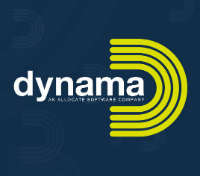 5 Benefits of interfacing workforce and asset management data with enterprise solutions
5 Benefits of interfacing workforce and asset management data with enterprise solutions
The effective management of people and resources is the first step to running an efficient organization. It all comes down to accessing the right information, at the right time and at the right cost. Simple, right? Well, it’s actually more complicated than you might think, especially in complex, highly regulated industries that often operate in dangerous conditions.
A common set of challenges
The first step is to understand that you are not alone. Organizations everywhere share a common set of challenges when it comes to bringing together information systems and processes. Let’s take a closer look:
- It’s like herding cats: More often than not, staffing requirements need to be combined with physical assets such as infrastructure or equipment – onshore, offshore and in the sky. To make matters worse, these human and physical resources are often at different locations and time zones where client projects can change in an instant
- Managing a myriad of systems: complex industries require a multitude of sector-specific applications (not just basic enterprise resource planning (ERP) and human resource (HR) applications) to support their business processes. How do you make them all work together?
- How do you know what information to trust?: Effective resource scheduling for a multi-skilled, diverse and dispersed workforce requires up-to-date information. However, with so many systems in place, how do you know the data you have is not duplicated or completely inaccurate?
- Communication: Schedules and resource allocations need communicating to those involved. These must also cover deployment, travel and other logistical issues before updating payroll and wider HR records
- Barriers to change: Advanced approaches to workforce and resource optimization offer the potential to improve service and enhance margins. However, too frequently the hurdle of investing in, deploying and linking old systems with new solutions gets in the way. How do you make seamless information systems working together a reality?
Integrated or Interfaced Systems
What’s the difference? Integrated systems are sometimes referred to ones that fit together to deliver a result, while interfaced can be thought of as systems that are compatible or work together.
An alternative to traditional integration is to find the best available applications that provide discrete system interfacing between associated systems. This offers significant cost savings compared to the traditional approach of replacing systems and existing databases with a large ERP application, customising for discrete business units. An interfacing approach also offers the potential to overlay new applications to derive incremental benefit (for example in advanced resource optimization) without compromising existing applications. Such an approach can also help to reduce any cultural barriers that might exist to adopting new technology.
Five benefits of interfacing workforce and asset management data
The latest workforce deployment technology addresses many of today’s information challenges. Critically, it brings together data from various specialist sources and links seamlessly with other enterprise systems such as strategic HR and project management solutions. The result – a complete view of the interdependencies and costs of people, equipment, activity and sustainability. An incremental low-cost approach via cloud-based, automated innovations allows users to derive the following five benefits:
- Information all in one place: staff and equipment assignment and deployment, qualifications and competencies, travel plans and documentation, regulatory compliance and timeline management. It’s all there at the click of a button or by using your mobile device – saving time, effort and money.
- Timely, accurate information: a valuable audit trail plus the hard evidence necessary helps demonstrate compliance and satisfy legislation and inspection.
- Configurability your way: today’s solutions incorporate bespoke interfacing capabilities with many specialist systems used in complex industries – reducing the often fatal cultural barriers to change adoption and efficiency.
- Enhance your talent pool with a comprehensive understanding and analysis of existing capabilities you can identify skills gaps to support better training, recruitment and career development. Keeping your best talent from straying to the competition is especially important in industries where highly skilled staff are in short supply.
- Play with the clever stuff: having access to all the right information, at the right time simplifies, yet contributes strategically to workforce management processes leaving you free to do the clever stuff. It accelerates decision-making and supports future planning by making scenario planning and budgeting easier, alongside compliance management.
For more information download the latest Dynama White Paper entitled “System Interfacing – The critical need for interfacing across information systems and processes” at www.dynama.global (registration required)
Dynama, an Allocate Software company, builds on 25 years’ heritage and is a leading provider of maritime and defence workforce deployment software. Headquartered in London, Dynama has a new office in Canberra (Australia) with sales and support in the USA.
Its flagship product, Dynama OneView, is designed to underpin complex workforce management in safety critical and high skill level environments, delivering both safe staffing and productivity savings.
Dynama does not offer legal advice or GDPR consultancy
For more information, visit www.dynama.global

 5 Benefits of interfacing workforce and asset management data with enterprise solutions
5 Benefits of interfacing workforce and asset management data with enterprise solutions
























